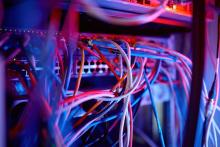The 6500 is a workhorse in the core and the data center. Network admins love to hate it and hate to love it. The variety of blades that can be inserted for in switch processing makes the platform applicable to many different network requirements. It's also an old platform and is getting pretty long in the tooth. With a paltry 80Gbps (full duplex) interconnect to the back plane, the 6500 simply isn't suited to stand as a next generation core data center switch. It's time to start thinking about putting it out to data center/LAN edge or as a core campus switch. Fortunately, you will have options for replacing the data center network.
While I had this thought circulating in my head for awhile now, a blog Cisco's Rip and Replace Dilemma from Stuart Miniman at Wikibon, a follow-up by John furrier at Silicon Angle, and then a response by Steve Schuchart with Current Analysis prompted me to chime in. They are pretty smart characters, but I think I might be able to add something to the discussion.
Any change you make to you data center is going to involve some disruptive replacement. Cisco is going to try to move you off the aging Catalyst platform that really can't support the coming capacities that data centers will demand. HP hasn't had a data center switch until they acquired 3Com and H3C, so whatever you're using from them will almost certainly require a replacement. Juniper doesn't have the market adoption yet, so if you go with Juniper, it will be a change. Brocade, Extreme, and Force10 have had high capacity switches for a while and if you already have them, you will likely get some life out of them for a few more years even moving to 10Gb Ethernet.
The position that Cisco is in is that they are disrupting their own users, and that provides an opportunity for you to replace your incumbent network vendor. whoever they may be. Look, learning a new switch line isn't that hard. For example, going from IOS on the Catalyst to NX-OS is probably as big a change is it is to learn another switch line from another vendor. Frankly, having managed and configured switches from most of the vendors out there, I can tell you learning a new switch line isn't that hard. There is a learning curve, but it's pretty short, and depending on the CLI, it can be pretty shallow. Anytime you make a big change that requires a large capital investment, it's an opportunity to look at what there is in the market and see if there is a better fit for you.
That should have your incumbent network equipment vendor nervous, and Cisco is nervous. Their nervousness (and by "they" I mean the Cisco Corporate Entity) isn't making them fearful and fretful about losing your business. Just the opposite, their nervousness is driving them to bring out new products and new technologies far ahead of their competition to tell you, their customer, that they are leaders in the field far ahead of the pack and that an investment in the Nexus line will be long lived.








